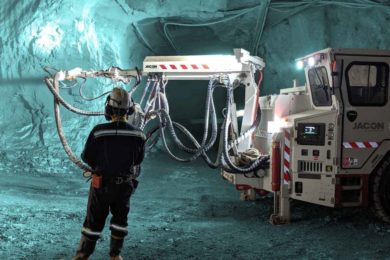GFMS’ World Silver Survey has recently been published showing results from 2008 and predictions for 2009. The metals consultancy sees mine production in 2009 falling slightly, with output expected to decline from all by-product sectors except gold. It also sees the price of silver remaining volatile, with investors becoming even more important to its level and direction. It notes strong investment between January and April of this year – much of it centred on ETFs and bullion products – and is forecasting that over the next three months silver will trade at around $11.50-14.39, broadly shadowing gold. It warns however that silver supply and demand fundamentals will turn negative, with a substantial surplus having to be absorbed by investors. Overall, it sees supply set to decline by around 2% this year.
In terms of demand, the GFMS sees industrial demand falling sharply in 2009, particularly in the electrical and electronic sector, reflecting the weak outlook for the global economy. Photographic demand will drop, but decline in volume as opposed to percentage terms could moderate compared to 2008. Jewellery is forecast to be down modestly in 2009. Losses in western markets are expected to accelerate this year due mainly to the weak economy. Silverware is expected to drop, as a result of secular shifts, plus poor economic prospects. Total fabrication demand in 2009 is forecast to fall by some 10%.
Moving to last year, world silver mine production grew by almost 3% or 16.7 Moz to a record 670.6 Moz. Higher silver mine output from gold and lead/zinc sectors drove the increase. However, silver production from primary silver mines declined by 1%. At a country level, the most notable increases were seen in Bolivia (+18.9 Moz) and Russia (+6.9 Moz) with by far the largest single decline coming from Chile (-17.1 Moz).
The demand for industrial fabrication of silver dropped for the first time since 2001, falling by some 1.4% to 447 Moz in 2008. The GFMS said that “Gains in the first half were fully offset by a fourth quarter collapse, mainly due to the abrupt slowdown in GDP growth.” Industrial uses accounted for 54% of global fabrication demand and 50% of total silver demand. GFMS: “Loss was apparent in most sectors of end use, although some, for example, photo voltaic cells, continued to show growth.”
Jewellery demand fell for the fifth consecutive year by just above 3% year-on-year to 158.3 Moz. Italy and Thailand accounted for around 75% of the gross losses, as exports were hit by lower consumption in major western markets. The demand in India, China and Russia rose; driven by the fast growing modern silver jewellery segment in local markets. The offtake in silverware fell slightly by 2%. The decline in western markets, a result of secular trends, higher prices and the economic crisis, was broadly offset by higher demand in India, mainly due to stock replenishment.
Scrap supply of the metal dropped by nearly 3% in 2008 despite a 12% increase in average dollar silver prices. Indian jewellery scrap fell last year, partly due to higher price expectations in the first half and the price weakness towards year-end. In a number of other countries more silverware and jewellery scrap was seen, especially when the price was peaking.
Government sales, estimated at 31 Moz in 2008, were down by 27% on the previous years’ levels. Russia accounted for the bulk of government sales and disposals from the country fell by nearly a third in 2008. The total government silver stocks are conservatively estimated at 72 Moz at the end of 2008.








